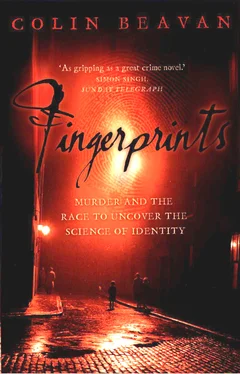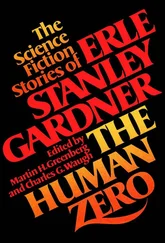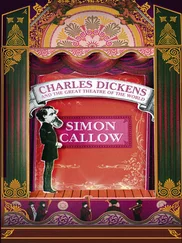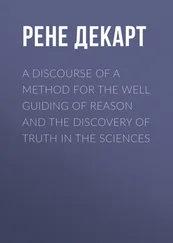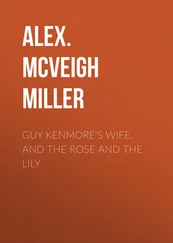It is not the ridges’ function that makes them of interest to the identification expert, however. What fascinates him instead is the fact that the intricate ridge patterns are unique to each finger. A fingerprint expert can tell apart the marks of two digits more easily than he can differentiate two people’s faces. The facial features of identical twins, for example, can be mistaken, but their fingerprints can never be confused by a trained expert. A person’s fingerprint set is therefore a permanent and unmistakable record of his identity. It is like a biological seal which, once impressed, can never be denied. Eighty thousand such biological seals of convicted criminals crowded the pigeonholes in Scotland Yard’s fingerprint branch.
This massive collection of fingerprints, however, had never before been used to collar a murderer. Sleuthing was not the fingerprint expert’s primary function. Instead, Collins and his colleagues passed their days filing fingerprints taken from recent convicts and using the previously filed fingerprints to doublecheck the identities of the newly arrested. Their main goal was to identify “recidivist” or “habitual” offenders who pretended to be first-timers, adopting pseudonyms in hopes of hiding their previous convictions and getting lighter sentences.
The practice of correlating a criminal’s sentence with the number of his prior convictions began in the nineteenth century, when jail cells and prison guards first took the place of gallows and their hangmen. To the essentially honest man who fell on hard times and stole to feed his family, the new prison system prescribed a short stay behind bars, just enough unpleasantness to deter further crime. It was believed that the habitual offender, on the other hand, could not so easily have his criminal bent punished out of him. Long-term removal from society was thought to be the only way to prevent his misdeeds. There was one problem with this two-pronged penal approach: How do you tell the hardened criminals from the first-timers?
The first suggested use of fingerprints as a method of criminal identification came in an October 1880 issue of the prestigious scientific journal Nature . An article, penned by an unknown Scottish medical missionary working in Japan named Henry Faulds, proposed many of the elements of the fingerprint system as it eventually came to be used. Faulds, having studied thousands of fingerprints, would spend the next ten years trying to convince Scotland Yard to adopt the ideas in his article. The Yard dismissed Faulds as a crank, and cruelly, when it finally did adopt fingerprinting, denied that Faulds had any part in the system’s conception.
A month after the publication of Faulds’s article, a second article on fingerprints appeared, also in Nature . William Herschel, a British magistrate based in Bengal, replying to Faulds, wrote that he had used fingerprints officially as “sign-manuals,” or signatures, sanctioning the idea’s practicality. Still, the British establishment paid no attention to fingerprinting until, in 1888, the interest of the well-known scientist Francis Galton gave it credibility. A cousin of Charles Darwin, Galton’s passion was the improvement of the human race by artificial selection. He took to fingerprints, thinking their intricate ridge patterns might somehow reveal their owners’ physical and mental capacities—their worth as breeding stock.
Galton’s published work sparked the interest of the Inspector-General of Police in Bengal, India, Edward Henry, who made the leap from theory to practice and applied fingerprints to police work. Henry and his assistant, Azizul Hague, developed a classification system that allowed fingerprint sets to be logically filed according to the form of their ridge patterns. Without the system, an inspector searching for a particular fingerprint set would have to rummage through the entire collection. With it, he easily went straight to the place where the set was filed. What came to be known as the Henry classification system made possible the use of fingerprint registers numbering in the many thousands, a prerequisite for practical use in criminal identification.
When widespread use of fingerprint identification proved successful in India, Henry was in 1901 recalled to London, made Assistant Commissioner of the CID, and charged with establishing Scotland Yard’s new Fingerprint Branch. The branch had immediate success, cracking the pseudonyms of 632 repeat offenders in its first year. In 1905, Henry was promoted to Commissioner of Scotland Yard. He left the Fingerprint Branch in the hands of Detective-Inspector Charles Steadman and his deputy, Detective-Inspector Collins, the officer to whom Macnaghten delivered the Farrow murder cash box.
At his workbench, Collins examined the cash-box tray under his magnifying glass. Fingerprints can be impressed in anything from paint to blood, but this one, like most found at crime scenes, had been left in sweat. On the gripping surfaces of the hands and feet, 3,000 sweat glands per square inch crowd together more densely than anywhere else on the body. Keeping the skin lubricated so it does not crack, the glands also make each finger like a self-inking rubber stamp, leaving calling cards on every surface it touches.
Because of this, since most human action involves touching, fingerprints invisibly populate the world’s surfaces. Taken together, these fingerprints are like pages from the Recording Angel’s book of deeds, and Charles Collins, with his magnifying glass, could read them. If a fingerprint he found on an object matched a fingerprint in his cabinet, Collins could deduce the name of the person who touched the object. This is how Collins hoped to discover Farrow’s murderer.
The impression on the cash-box tray followed an arch pattern and came from a right thumb. Collins could tell that it was a thumb because the impression was too large to come from other fingers. He could tell right or left by the slope of the ridges. Ridge slope on a right thumb impression is more steep on its right side, and vice versa for a left thumb.
Collins’s next job was to search through his files, paying special attention to the prints of housebreakers who had an arch on the right thumb. He fingered his cabinet’s cards slowly and meticulously, for he knew that public acceptance of fingerprint evidence could be won through their successful use in this case. But no luck. On Tuesday morning, the day after the murder, he reluctantly reported to Macnaghten that the print on the cash-box tray did not match any prints on file.
The news was not all bad, however. Collins had compared the cash-box tray print to those of Mr. and Mrs. Farrow and of Sergeant Atkinson, who had mistakenly touched the tray. The print belonged to none of them. That meant that it probably belonged to one of the murderers. If so, Macnaghten and Collins thought they could use it to win both their case and their much desired public respect for fingerprints. But first a suspect had to be found.
The investigation’s first lucky break came when Chief Inspector Fox encountered Henry Jennings, a milkman, and Edward Russell, his eleven-year-old helper. During their rounds, about 7:15 on the morning of the murder, Jennings and Russell saw two men coming out of Chapman’s. One had a dark mustache and wore a blue suit, black boots, and a bowler hat. The other was clad in a dark brown suit, gray cap, and brown boots. Jennings shouted to them, “You have left the door open.” The mustached man turned around and said, “Oh! It is all right; it don’t matter,” and left the door ajar.
Fox now had descriptions of two suspects. But if the milkmen had last seen the door open at 7:15, and William Jones arrived at 8:30 to find it locked tight, who closed the door? Was there, Chief Inspector Fox wondered, a third robber who came out after the other two, closing the door behind him?
Читать дальше
